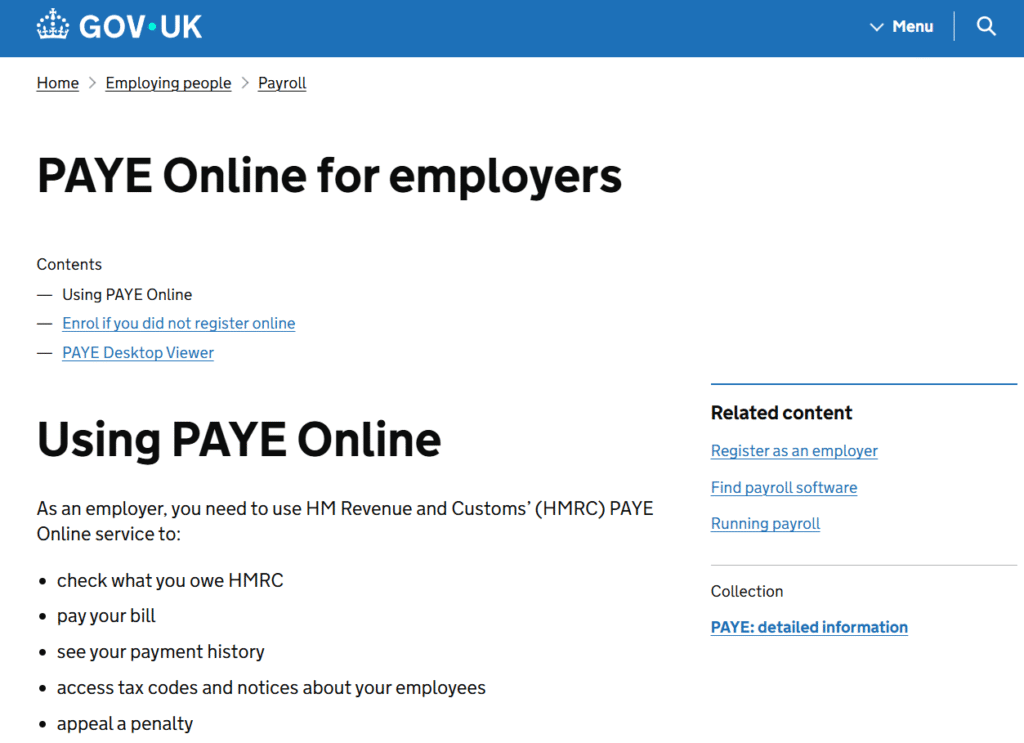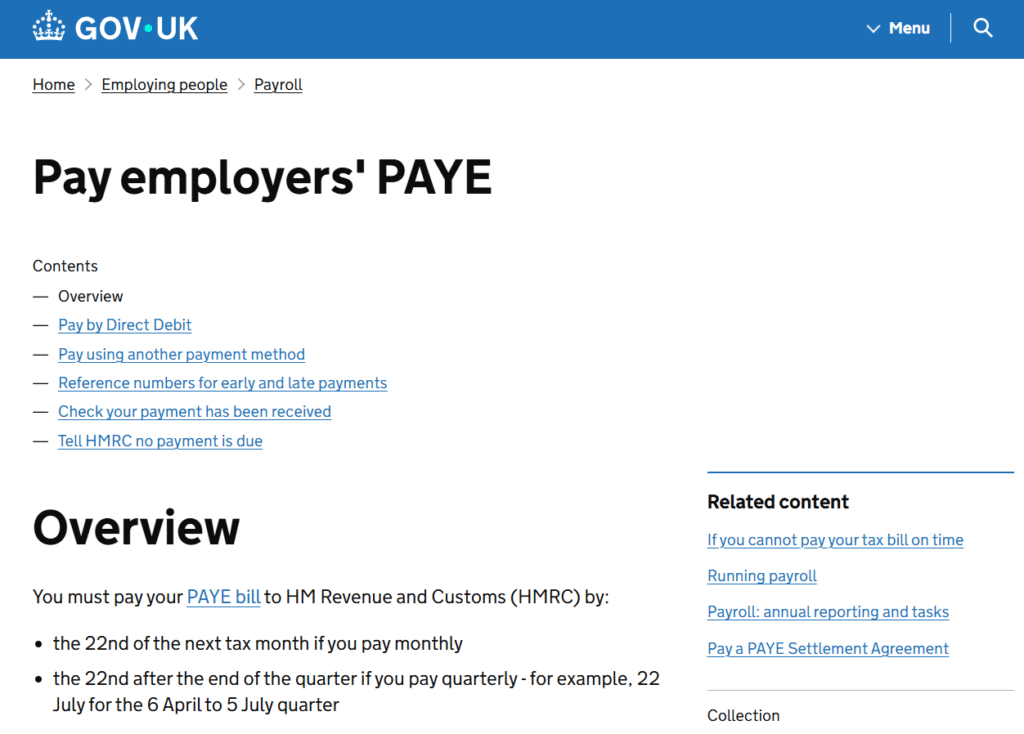P30 HMRC – Complete Guide to Employer PAYE Payment Records, Historic P30 Forms, and Modern RTI Requirements
Understanding the P30 Form (Historic and Modern Context)
Before HMRC introduced Real Time Information (RTI) in April 2013, employers used a series of end-of-year and monthly forms to manage PAYE. Among these was the P30, a monthly Employer PAYE Remittance form used to record and pay:
-
PAYE income tax
-
Employee National Insurance contributions
-
Employer National Insurance
-
Student loan deductions
-
Other payroll deductions
Although the P30 no longer exists as an active form, employers still frequently need P30-equivalent information for PAYE audits, HMRC reviews, reconciliation, account corrections, and historic payroll calculations. Many accountants, payroll providers, and HMRC systems still reference “P30” when dealing with pre-2013 years.
This guide explains exactly what P30 was, how PAYE payments work today under RTI, how to retrieve old payment information, and how employers can fix PAYE discrepancies or historic underpayments.
Audit Consulting Group created this guide to help UK employers understand the modern equivalent of the P30 and stay fully compliant with HMRC requirements.
What Was the HMRC P30 Form?
Before RTI was introduced, the P30 form served as the employer’s monthly PAYE payment record. The employer recorded how much PAYE and NI was due for the month and used the P30 to process their payment to HMRC.
The P30 formed part of the old “End of Year” PAYE system, which included:
-
P14 (Employee End of Year Summary)
-
P35 (Employer Annual Return)
-
P38 (Student workers)
-
P32 (Employer’s NIC record)
-
P30 (Monthly remittance and payment record)
All of these were abolished when RTI was introduced in April 2013.
Purpose of the P30 Form
The P30 allowed employers to:
-
Record total PAYE due
-
Record NIC due
-
Reconcile monthly payroll costs
-
Process payments to HMRC
-
Track differences between estimated and actual payments
-
Provide year-end information for P35 and P14 submissions
In other words, P30 was the core monthly PAYE payment record used before digital PAYE submissions existed.
Why the P30 Was Abolished
HMRC replaced P30 and all other year-end forms with Real Time Information (RTI). Under RTI, employers now report payroll data:
-
Every time they pay employees
-
Through FPS (Full Payment Submission)
-
Through EPS (Employer Payment Summary)
-
With digital payments tracked automatically
RTI provides HMRC with live payroll data, eliminating the need for paper records like P14, P35, and P30.
Modern Equivalent of the P30 (RTI System)
Although P30 itself is gone, employers still need the information it used to contain. Under RTI, you can obtain the same financial data from:
1. Payroll software reports
Most payroll systems include:
-
Monthly PAYE payment summary
-
NIC contributions
-
Employer liabilities
-
Employee deductions
-
Payment schedules
These reports provide the modern “P30 equivalent.”
2. HMRC Employer PAYE Online
Employers can view:
-
PAYE liabilities
-
PAYE payments
-
Tax periods
-
Adjustments and corrections
-
Penalties and charges
Link:
https://www.gov.uk/paye-online
3. EPS (Employer Payment Summary)
Used to report:
-
Reductions (SMP, SSP, CIS, etc.)
-
Employment Allowance
-
Overpaid PAYE
-
Recoveries
4. Banking and payment records
Your actual payments to HMRC create the “P30 equivalent history.”
5. HMRC Business Tax Account
PAYE payment history can be seen directly in the employer’s digital tax account:
https://www.gov.uk/sign-in-prove-identity
How Employers Used the P30 (Before RTI)
To understand historic PAYE calculations, it helps to know exactly what employers recorded on the P30.
The P30 included monthly totals for:
-
PAYE income tax deductions
-
Employee NIC
-
Employer NIC
-
Student loans
-
Construction Industry Scheme deductions (if relevant)
-
SMP, SSP, SAP adjustments
-
Total PAYE due for the period
The employer paid this total to HMRC, usually by:
-
Direct debit
-
Standing order
-
Cheque
-
Bank transfer
Today, all of this is done via digital RTI submissions.
Why Employers Still Need P30 Data Today
Even though the form no longer exists, employers frequently need P30-equivalent PAYE payment data for:
HMRC PAYE audits
HMRC may request old payment records to reconcile PAYE liabilities.
Correcting payroll errors
If historic data does not match, employers may need P30-equivalent summaries to fix mistakes.
PAYE Underpayment or Overpayment
Retrieving P30 records helps calculate:
-
PAYE overpayments (refunds)
-
PAYE underpayments (debts)
Payroll migration
Switching payroll systems may require historic P30 payment records.
VAT compliance
In some industries, PAYE and NIC payments are used for reconciliation.
Pensions or auto-enrolment audits
Historic payroll information may be needed for pension regulators.
Legal or tribunal cases
Employment tribunals often require evidence of historic payroll payments.
How to Access P30-Equivalent Records Today
1. HMRC Employer PAYE Online Account
This is the most accurate source for modern and historic PAYE payment data.
You can access:
-
PAYE due each month
-
PAYE paid
-
Underpayments / overpayments
-
Payment allocations
-
Charges and penalties
-
Year-end totals
Login page:
https://www.gov.uk/paye-online
2. Payroll Software Reports
All major payroll software stores PAYE summary reports:
-
Sage Payroll
-
Xero Payroll
-
QuickBooks Payroll
-
Moneysoft
-
BrightPay
-
FreeAgent
-
IRIS
You can download:
-
Month-by-month PAYE liability
-
Employer NIC contributions
-
Employee NIC deducted
-
Payroll journals
These reports form the modern equivalent of the old P30.
3. Bank Statements
PAYE is typically paid monthly to HMRC.
Bank statements provide:
-
Payment dates
-
Reference numbers
-
Amounts paid
-
Confirmation of cleared payments
These are accepted by auditors and HMRC.
4. Requesting Historic Payment Data from HMRC
Employers can request historic PAYE payment history for pre-2013 years.
To request:
-
Contact HMRC Employer Helpline: 0300 200 3200
-
Provide PAYE reference and Accounts Office reference
-
Request “historic PAYE liabilities and payments”
HMRC can issue a “historic PAYE statement” (similar to a P30 summary).
P30 and P32 – What’s the Difference?
Many employers confuse the P30 with the P32.
P30 = Payment record
What the employer actually paid to HMRC monthly.
P32 = NIC record & liability schedule
Shows:
-
Employer NIC
-
Employee NIC
-
PAYE due before adjustments
Most accountants treat P32 as the technical liability report and P30 as the payment record.
P30 After RTI – What Employers Must Do Today
Today, employers must:
Submit FPS every time they pay employees
This updates tax codes, earnings, deductions, and NIC.
Submit EPS monthly (if needed)
This updates:
-
Statutory payments reclaimed
-
Reductions
-
CIS deductions suffered
-
Employment Allowance
Pay PAYE & NIC by the 22nd of each month
For electronic payments.
PAYE payment deadlines:
https://www.gov.uk/pay-paye-tax
Keep payroll records for at least 3 years
Though HMRC can request more during investigations.
Correcting Errors Related to Historic P30 Data
1. Overpayments
Employers often discover they have overpaid PAYE or NIC if:
-
EPS reductions were not applied
-
Duplicate payments occurred
-
Payroll system errors happened
HMRC can issue refunds or offset the credit.
2. Underpayments
Underpayments occur when:
-
FPS reported liabilities incorrectly
-
P32 and payments did not match
-
Miscalculated NIC bands
-
Incorrect tax codes
HMRC will notify the employer and may apply interest.
3. Mismatched HMRC Records
Sometimes HMRC records do not match employer records.
Professional reconciliation is often required.
Audit Consulting Group helps employers:
-
Correct past FPS
-
Submit EYU (Earlier Year Update) for older years
-
Amend mistakes
-
Communicate with HMRC
-
Retrieve old P30-equivalent payment data
Case Studies
Case Study 1 – PAYE Audit
Client: Manufacturing Firm, Leeds
HMRC requested historic PAYE payments going back to 2011.
Outcome: We retrieved P30 data from employer software and HMRC → audit passed.
Case Study 2 – Underpayment Correction
Client: Hospitality Company, London
PAYE underpayment of £12,400 discovered due to NIC miscalculation.
Outcome: We corrected historic FPS and negotiated payment plan.
Case Study 3 – Payroll Migration
Client: Retail Chain, Manchester
Needed complete P30-equivalent payment history to switch payroll providers.
Outcome: We rebuilt 36 months of payroll liability data.
Case Study 4 – Employment Tribunal
Client: Logistics Company
Required old payroll records to defend against claim.
Outcome: We produced full P30-equivalent evidence.
Frequently Asked Questions (FAQ)
Q1: Does the P30 form still exist?
No. It was abolished in 2013.
Q2: What replaced the P30?
The P30 was replaced by RTI submissions:
-
FPS
-
EPS
Q3: How can I access old P30 records?
Through:
-
HMRC Employer PAYE Online
-
Payroll software
-
Bank statements
-
Historic HMRC data requests
Q4: Do employees need P30?
No — P30 was for employers only.
Q5: How far back can I retrieve P30 data?
HMRC maintains records dating back many years — often as far as 2000.
Q6: Can I correct mistakes from P30-era years?
Yes, but it may require EYU or specialist support.
Q7: Can P30 information be used for PAYE refunds?
Yes — historic P30 data helps identify overpayments.
Q8: How long should employers keep PAYE records?
At least 3 years, but ideally longer for historic compliance.






